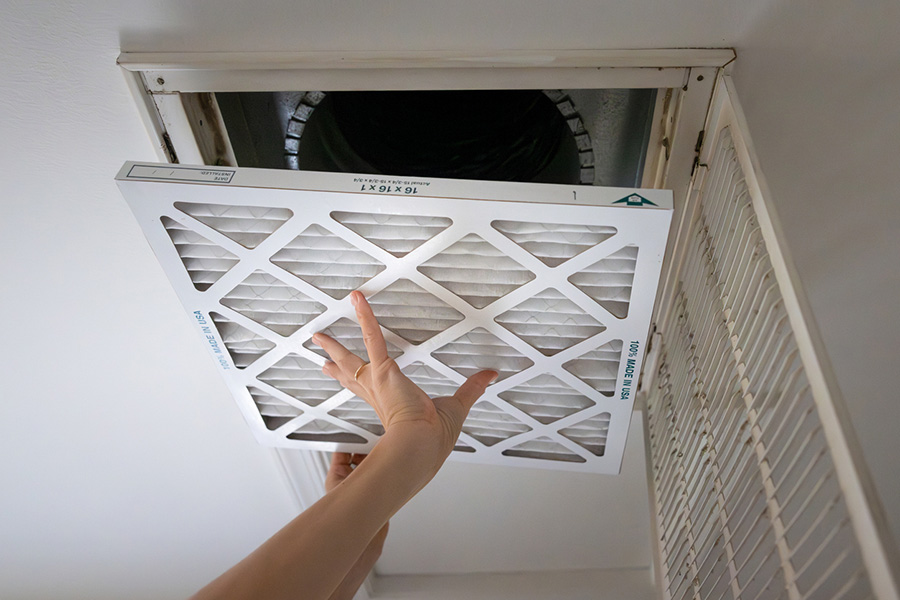Serving Nashville and the Middle Tennessee Area

The Maynard Man Asks: How Are Your Ducts Doing?
You might not see them, but your air ducts are hard at work every time your HVAC system kicks on—carrying heated or cooled air to every room in your home. When they’re in good shape, you enjoy consistent comfort, cleaner air, and efficient energy use. But when ducts are dirty, leaking, or blocked, you might notice dust buildup, uneven temperatures, or rising utility bills without understanding the cause. That’s why The Maynard Man wants you to check in on this often-overlooked part of your home. In this blog, we’ll walk through the common duct issues homeowners face, how to spot the signs of trouble, and what you can do to fix them. Because when your ducts are doing their job right, your whole home feels the difference.
Common Duct Problems That Go Unnoticed
It’s easy to forget about your ductwork—it’s tucked away behind walls, under floors, or in the attic. But just because it’s out of sight doesn’t mean it should be out of mind. Duct issues can develop slowly and silently, reducing comfort and efficiency without ever making a dramatic entrance.
Leaks and Loose Connections
Even small gaps at duct joints or loose connections can lead to significant air loss over time. Instead of reaching your living spaces, heated or cooled air can escape into unconditioned areas like attics, basements, or inside walls. This reduces overall comfort and forces your system to run longer just to maintain the set temperature. The result is wasted energy, higher utility bills, and unnecessary wear on your HVAC equipment.
Blockages and Buildup
Over time, it’s common for dust, pet dander, and even small bits of debris to settle inside your ductwork. In more severe cases, pests can leave behind nesting materials or droppings that further clog the system. This buildup can restrict airflow and make your HVAC system work harder than it should. It also negatively impacts indoor air quality, potentially triggering allergy symptoms or respiratory discomfort—especially in sensitive individuals.
Poor Design or Sizing
Some duct systems weren’t designed with airflow balance in mind. If ducts are undersized, too long, or improperly routed, it can lead to temperature imbalances, longer system cycles, and premature wear on your HVAC equipment.
Signs Your Ducts Might Be Struggling
You don’t need to see your ductwork to know something’s wrong—you just have to pay attention to the signs your home and HVAC system are giving you. These red flags often point to hidden issues that could be impacting your comfort, air quality, and energy usage.
Uneven Temperatures: Are some rooms consistently warmer or colder than others? This could mean air isn’t reaching them properly due to leaks, blockages, or poorly balanced ductwork.
Dust That Keeps Coming Back: If you’re constantly cleaning and still seeing dust accumulate quickly, your ducts may be circulating debris due to buildup or leaks pulling in contaminants.
Strange Smells: Musty, stale, or even slightly burnt odors when your system runs can indicate moisture, mold, or accumulated debris inside the duct system.
Higher Energy Bills: When air escapes or can’t move efficiently, your system has to work harder—driving up your utility costs without improving comfort.
Weak or Noisy Airflow: If your vents are blowing softly or making whistling or rattling noises, you could be dealing with crushed ducts, disconnected sections, or blockages.
How Dirty or Damaged Ducts Affect Your Home
When your ductwork isn’t in top shape, your entire HVAC system feels the strain—and so do you. Leaky, blocked, or poorly maintained ducts don’t just lower your comfort level; they impact your home’s efficiency, cleanliness, and even your health.
Reduced HVAC Efficiency: When air can’t move freely, your heating and cooling system has to run longer to reach the desired temperature. This means more wear on the system and higher energy bills for you.
Lower Air Quality: Dust, mold, pet dander, and allergens can build up inside ducts and get recirculated throughout your home. If anyone in the household has asthma or allergies, this can trigger frequent symptoms and discomfort.
Shortened Equipment Lifespan: The harder your HVAC system has to work to move air through faulty ducts, the more stress it’s under. Over time, that added strain can lead to breakdowns and early replacement—something no homeowner wants.
What You Can Do About It
Fortunately, you don’t have to settle for subpar ductwork. There are several steps you can take to improve your duct system’s performance and ensure your HVAC system isn’t working overtime to make up for hidden issues.
Schedule a Professional Duct Inspection: A trained technician can use specialized tools to check for leaks, pressure imbalances, and airflow restrictions you can’t see. It’s the best way to get a clear picture of your duct health.
Clean Out Built-Up Debris: If your ducts haven’t been cleaned in several years—or ever—consider having them professionally cleaned. This can remove dust, allergens, and any lingering odors, helping your system breathe easier.
Seal and Insulate Problem Areas: Sealing duct joints with mastic or foil tape and insulating exposed duct runs in attics or crawlspaces can drastically cut energy loss and improve air delivery.
Make Design Improvements if Needed: If your duct layout is outdated or was never designed correctly for your home’s size, a few key updates can bring huge benefits in comfort and efficiency.
Wrap-Up: Give Your Ducts the Attention They Deserve
Your ductwork might be out of sight, but it should never be out of mind. When ducts are clean, sealed, and properly designed, they help your HVAC system work better, your air feels fresher, and your energy bills stay lower. But when something’s off—even just a small leak or hidden clog—it can ripple through your entire home’s comfort and efficiency. That’s why The Maynard Man recommends giving your duct system a regular check-up. Contact Maynard Plumbing, Heating, Cooling to schedule a professional inspection and make sure your home’s air is moving cleanly, comfortably, and efficiently where it counts.
Recent News
5 Signs Your Water Heater Needs Repair Before Winter Arrives in Nashville
How Regular Drain Cleaning Can Prevent Costly Plumbing Emergencies
High-ROI Home Improvements in Nashville
Energy Efficiency & Indoor Air Quality Blueprint for Tennessee Homes
Home Heating and Cooling Options: Ductless, Mini Split, and Heat Pump Explained
The Ultimate Nashville Home Maintenance Calendar
Why Indoor Humidity Matters in Nashville — from Your Experts at Maynard Plumbing, Heating & Cooling
Schedule Service


